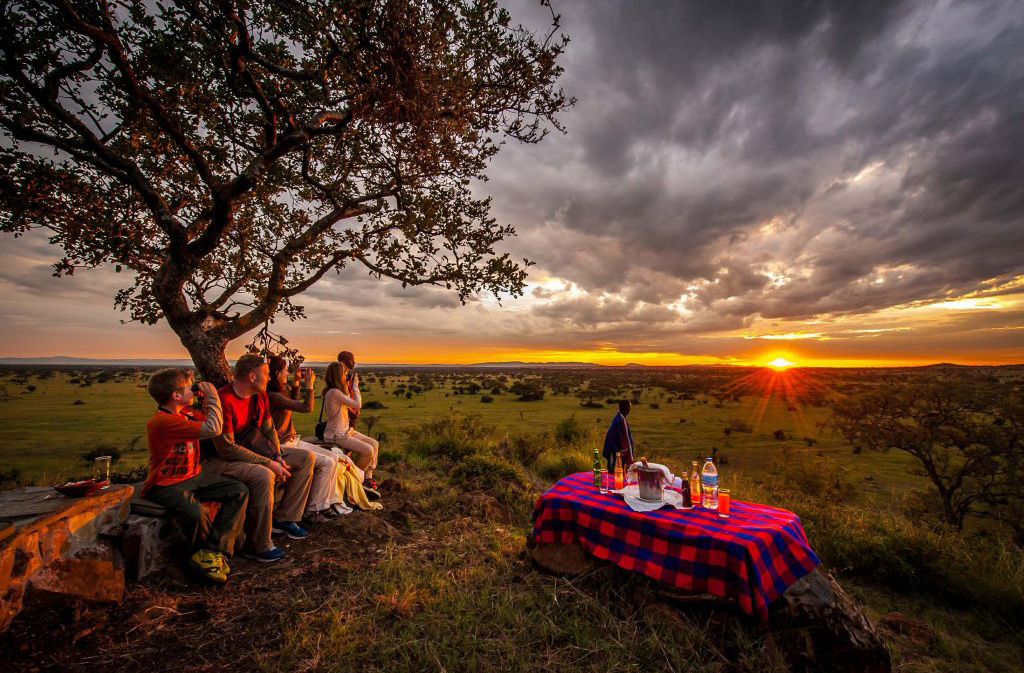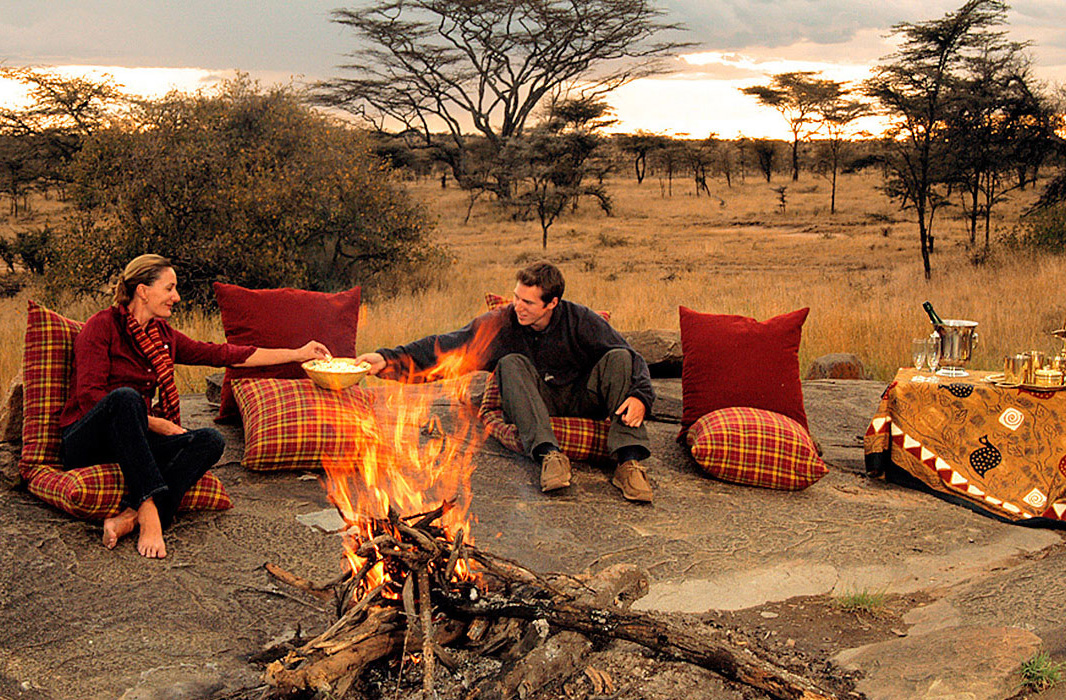Tanzania is one of the best places in Africa for a safari. It offers stunning landscapes, incredible wildlife, and rich cultural experiences. From the wide plains of the Serengeti to the magical Ngorongoro Crater, Tanzania is a dream destination for nature and adventure lovers.
On your Tanzania safari, you can see the famous Big Five animals: lions, elephants, leopards, rhinos, and buffalo. You might also witness the Great Migration in the Serengeti, where millions of wildebeest and zebras move across the land in search of fresh grass. This is one of the world’s most amazing wildlife events.
Tanzania has many incredible national parks to explore. Mikumi National Park is like a smaller Serengeti, with animals like giraffes, zebras, and lions. Nyerere National Park (once called Selous Game Reserve) is one of the largest wildlife parks in Africa, perfect for boat and walking safaris. Here, you’ll see hippos, crocodiles, and rare wild dogs.
Ruaha National Park is Tanzania’s biggest park and is great for spotting elephants, lions, cheetahs, and leopards. It’s also a bird lover’s paradise, with over 570 bird species. Tarangire National Park is famous for its huge elephant herds and ancient baobab trees, while Lake Manyara National Park is home to tree-climbing lions and colorful flamingos.
For adventure seekers, you can climb Mount Kilimanjaro, the tallest mountain in Africa, or hike Mount Meru, which offers incredible views. You can also visit Lake Natron, a unique salt lake where thousands of flamingos gather, creating a breathtaking scene.
A Tanzania safari isn’t just about wildlife. You can meet local tribes like the Maasai, Hadzabe, and Datoga to learn about their traditions and way of life. Whether you choose a luxury lodge safari, a budget camping trip, or a family-friendly adventure, Tanzania has something special for everyone.
Discover the beauty of Tanzania, where the wild meets the wonder. With so much to explore, it’s a destination that will leave you with unforgettable memories.
“A safari in Tanzania is not just a journey; it's a once-in-a-lifetime adventure that connects you to the beauty of nature and wildlife like nowhere else.”
By Meilleur Tours and Safari
Tanzania offers some of the best luxury safari experiences in Africa. Imagine staying in exclusive lodges or high-end tented camps, where you can enjoy comfort while being close to nature. With Meilleur Tours and Safari, you can explore iconic parks like Serengeti, Ngorongoro Crater, and Tarangire in style, with private game drives and personal guides.
On a luxury safari with Meilleur Tours and Safari, you can witness the Big Five, enjoy gourmet meals, and relax in luxury accommodations after a day of wildlife adventure. It’s perfect for those who want to experience Tanzania’s natural beauty without sacrificing comfort.
Whether you prefer a private safari or a stay in a luxurious lodge with panoramic views, Meilleur Tours and Safari offers an unforgettable experience for those seeking adventure, relaxation, and world-class service.
Enjoy a memorable family adventure with a Tanzania safari. Meilleur Tours and Safari offers family-friendly packages that cater to all ages, ensuring everyone in the family has an unforgettable experience. Explore Tanzania’s top parks, including Serengeti, Ngorongoro Crater, and Tarangire, with tailored game drives that are both exciting and educational for kids and adults alike.
On a family safari with Meilleur Tours and Safari, you’ll have the chance to see the Big Five in their natural habitat, learn about local cultures, and engage in activities that suit all members of the family. Whether it’s a thrilling game drive, a guided nature walk, or visiting a local Maasai village, there’s something for everyone.
With comfortable accommodations, family-friendly lodges, and personalized itineraries, your family can enjoy the best of Tanzania’s wildlife while creating lasting memories together. Let Meilleur Tours and Safari provide your family with an adventure that’s both fun and educational, all while experiencing the beauty and magic of Tanzania.
Discover the beauty of Tanzania with Meilleur Tours and Safari’s Private & Midrange Safari options. Whether you want a personalized experience or a comfortable adventure, we have the perfect package for you.
Private Tanzania Safari: Enjoy complete privacy and flexibility with a Private Safari. Explore Serengeti, Ngorongoro Crater, and Tarangire at your own pace with a dedicated guide and vehicle. Experience Tanzania’s wildlife and beauty in comfort and luxury.
Midrange Tanzania Safari: If you prefer a balance of adventure and comfort, our Midrange Safari is perfect. Stay in well-located lodges, enjoy thrilling game drives, and explore iconic parks like Serengeti and Ngorongoro Crater, all at an affordable price.
Whether you choose a Private or Midrange Safari, Meilleur Tours and Safari offers unforgettable experiences with expert guides and stunning wildlife encounters. The perfect way to explore Tanzania’s wonders.
Camping Tanzania Safari: Experience an authentic African safari with Meilleur Tours and Safari's Camping Safari. Stay in well-equipped campsites in top destinations like Serengeti, Ngorongoro Crater, and Tarangire. Enjoy exciting game drives, cozy evenings by the campfire, and an eco-friendly adventure close to nature.
This affordable safari offers guided tours, delicious meals, and expert camp staff, making it a perfect option for outdoor lovers seeking an immersive experience without compromising comfort.
Group Joining Tanzania Safari: For a fun and budget-friendly experience, join our Group Joining Safari. Explore Serengeti, Ngorongoro Crater, and Lake Manyara with like-minded travelers. Enjoy exciting game drives, wildlife sightings, and cultural experiences at a great price.
Ideal for solo travelers, couples, or small groups, this safari provides an affordable way to discover Tanzania's beauty while meeting new people and making memories.
Whether you choose a Camping or Group Joining Safari, Meilleur Tours and Safari guarantees an unforgettable adventure in Tanzania's wild heart.
Experience Tanzania like never before with a Balloon Safari from Meilleur Tours and Safari. Enjoy breathtaking views of the Serengeti and other stunning parks from above as you float over the savannah. A balloon ride gives you the chance to see wildlife from a unique perspective, including the Big Five and other iconic animals.
Start your day early with a peaceful hot air balloon ride as the sun rises over the African plains. Watch herds of wildebeest, zebras, and elephants below. After the ride, enjoy a delicious champagne breakfast in the heart of the wilderness.
A Balloon Safari is perfect for anyone looking to add an exciting and memorable experience to their Tanzania safari. Don’t miss this opportunity to see Tanzania’s beauty from the sky!
Celebrate your love on a Honeymoon Safari in Tanzania with Meilleur Tours and Safari. Explore the Serengeti, Ngorongoro Crater, and Tarangire while enjoying private game drives, luxury accommodations, and breathtaking wildlife. This romantic adventure includes intimate dinners, stunning views, and the chance to see the Big Five.
Make your honeymoon unforgettable with a romantic safari, complete with activities like a hot air balloon ride over the Serengeti. Let Meilleur Tours and Safari create your dream honeymoon experience in Tanzania.

































